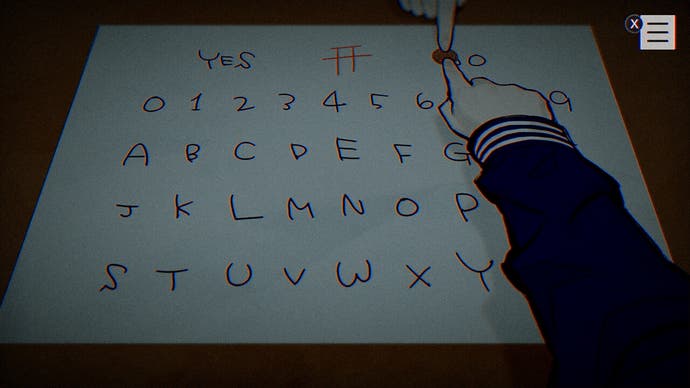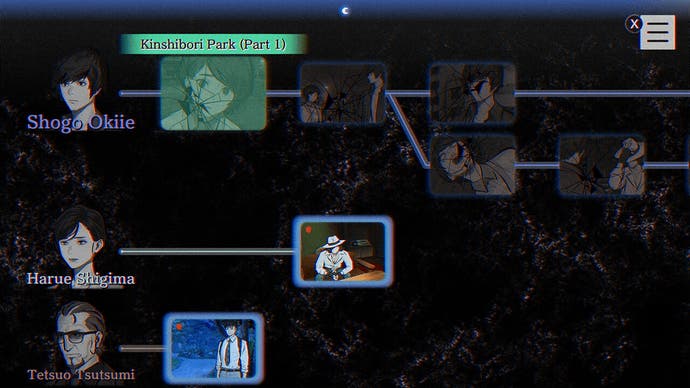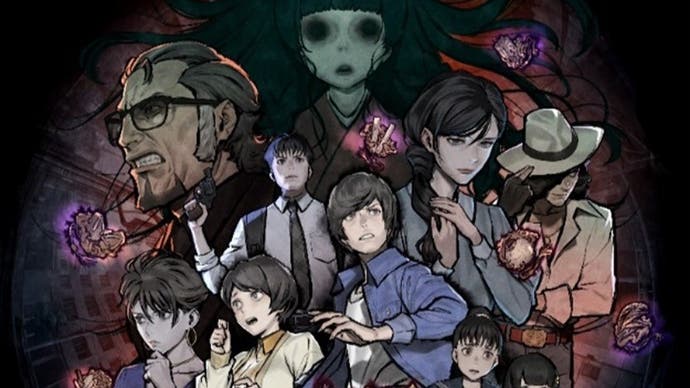Paranormasight: The Seven Mysteries of Honjo review - spooky goings on in Tokyo
Curses!
Hark! What's that sound? A car backfiring? A gunshot? A train collision at a crossing gate? In Paranormasight, that crashing noise, brisk but richly layered, a bit of metal to it, is the sound of understanding. It fires up the moment a character makes a connection between two disparate parts of the plot. It's the proverbial dropping of a penny. It's the instance of the fingerpost. Aha! But also, since this is a doomy kind of fairy tale: oh dear.
Paranormasight is a visual novel set in the Sumida Ward of Tokyo. We're sometime in the past, as the telephones are old bakelite things and the TV sets still come in lacquered wooden cabinets. And we're somewhere slightly removed from our world too. People believe strange stories and are willing to make odd leaps of logic. We are often fixed on the spot but able to turn in a neat 360 degrees, all the better to take in the environment and set ourselves up for a jumpscare. And the colours sizzle and throb slightly, drab greys and blues and sickly creams, but all lit from within, as if seen through the light of a failing 80s television tube.
I'll get this out of the way now. I love this game. I think it's intriguing and brilliant and haunting. And the set-up is wonderfully strange. One night in Honjo, a group of strangers are brought together by an old legend: seven tales of ancient spookiness rooted in specific parts of the neighborhood, along with vague rumours of an ancient rite that can raise the dead. But the rite is confusing - like the tales of ancient spookiness its edges and detailing have been foxed and spattered by time. And it appears the only way to trigger the rite is to commit murder?
That's the set-up, but anything more would dip us into spoiler territory, I think. I certainly wouldn't want to know more than this going in.
Instead, marvel at the way this ingenious game works. In many ways Paranormasight is a standard visual novel. You move between locations and between the different characters you control at different moments, prompting details of the environment to trigger streams of consciousness - what does my character think of the surroundings, of that telephone booth, of that stranger lingering in the distance? - and having lengthy multi-part conversations with the people you meet. At any point you can press a THINK button (I wish I had one in real life), that allows direct access to what the character you're controlling has made of everything you learn. And so you rove around, a text vampire, trying to draw as many words and insights out of the environment, the moment, the people you meet, so you have more material for the puzzles and the points in the story when you have to put things together.
But what I love in particular here is how Paranormasight's constant shifts in perspective, from this character to another, work with the spooky setting and the short time frame to create unbelievable tension. And this tension almost always comes from information. Who knows something I don't? Who doesn't yet know what I have just learned? Where can I go and who can I speak to in order to uncover the missing piece of the story that eludes me? It's one of those games where everything might be important - an aside from a character, the precise time you arrive in a new location. And at the same time all this information is highly subjective. Two characters arriving in the same small street react to it in a different way: a high-class lady suppresses a shudder at such proximity to poverty, a seasoned copper thinks about what such a cramped location would mean for potential witnesses.


This sort of thinking spirals outwards as you work deeper into the narrative, because, ultimately, the mystery here is one of motives. Given a chance to gain astonishing power, what do the people you have met and travelled alongside on this special night and the sicky grey day that follows - what do these people truly wish for? And what might they be willing to do to grant that wish? And is there anyone amongst the cast who might want it all just that little bit more?
What a game. A tangle of motives, rendered all the more thrilling by memorable characters, some of which slyly subvert stereotypes, by moments of whimsy, by static art that has a particular flair for eyes, and for the way that eyes can reveal the interior life of a person. And that setting! One night, and one grey, drained-away day in Tokyo, the buildings sheer walls of bleached concrete, the sky latticed by power lines, telephone lines, by the webs of all that information zinging about.


Lots of games aspire to TV these days - show me a Sony first-party that doesn't have an atomiser blast of Prestige Telly to it. Paranormasight reminds me of TV of a very different kind. It's the 1990s, it's around 11.30 on BBC 2 and you click on because you can't sleep and there's something weird and niche playing that nobody at school has heard about or been watching. But you give it five minutes and you can't let go after that.
Paranormasight is a delight, then. A mystery, a puzzle, and a ghost story that's genuinely haunted by the player on the other side of the screen.



